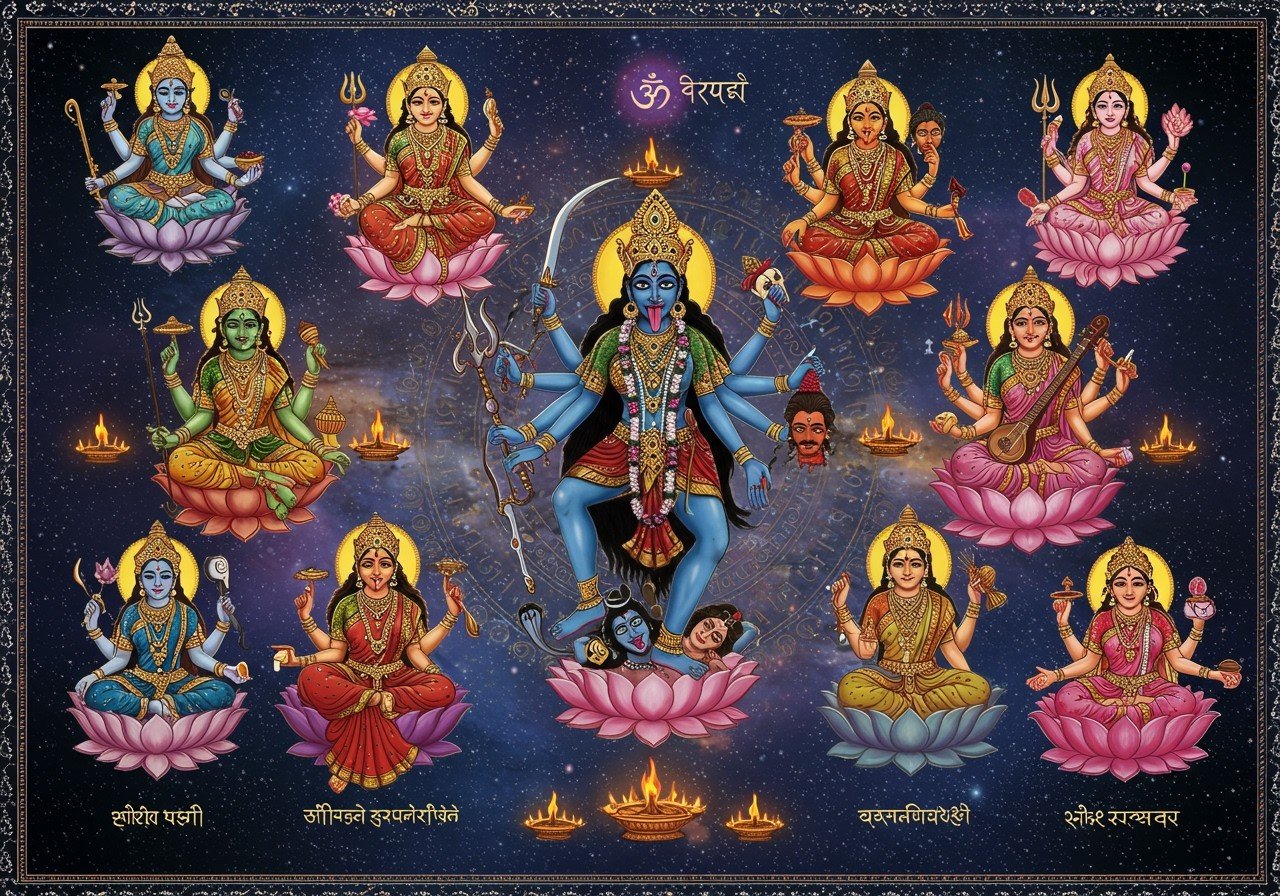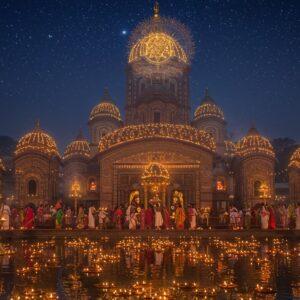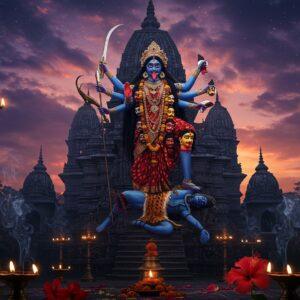
Embark on a journey into the mystical realm of the Mahavidyas, the ten wisdom goddesses revered in Hindu Tantric tradition. Discover their profound significance and how they embody various facets of feminine energy, representing wisdom and transcendental knowledge. This exploration delves into the individual attributes of prominent Mahavidyas such as Kali, Tara, and Bhuvaneshwari, offering insights into their unique qualities and cultural relevance. Uncover the secrets of these powerful deities and their impact on spiritual practices.
Understanding the Concept of Mahavidyas
Mahavidya, meaning “Great Wisdom,” refers to the ten goddesses, each possessing distinct characteristics and powers. They showcase the diverse spectrum of feminine divinity, worshipped for spiritual enlightenment and self-realization. Rooted in Hindu scriptures and Tantric traditions, the Mahavidyas are considered expressions of ultimate reality.
-
Kali: The first of these goddesses, Kali, embodies fierce power, destroying evil and liberating souls. Often depicted with dark skin, a garland of skulls, and an outstretched tongue, she eradicates ignorance and is associated with time and change. Her worship is prevalent in India, particularly in Bengal, where she is revered as a mother goddess. Tantric rituals frequently incorporate her potent energy. Consider enhancing your spiritual practice with a beautiful brass Maa Tara murti from Poojn.in.
-
Tara: Tara, the goddess of compassion and protection, acts as a guide and savior in times of distress. Her iconography often features a blue complexion and a protective posture. Sharing connections with the Buddhist goddess of the same name, Tara demonstrates cross-cultural influences. She guides spiritual journeys and is linked to speech and sound. Rituals and mantras emphasize her nurturing nature. Explore Poojn.in’s collection of Maa Tara murtis to find the perfect representation for your personal altar.
-
Bhuvaneshwari: Bhuvaneshwari, a regal presence, is known for the creation and sustenance of the universe. Often depicted holding a lotus with a serene expression, she reigns as the cosmic queen, governing space and ether. Tantric practices revere her for prosperity and harmony. Her influence extends to art and culture, especially in temple architecture. Poojn.in also offer a wide variety of items dedicated to Hindu dieties, consider a traditional dor mala to complete your spiritual practice.
The Cultural and Spiritual Significance of the Mahavidyas
The Mahavidyas have a profound cultural impact in India, influencing art, music, and literature. Their worship is a pathway to spiritual transformation, deepening self-understanding and connection with the universe. Celebrated in festivals across India, they represent a bridge between tradition and modernity in contemporary spiritual practices. These goddesses are not merely figures of worship; they are powerful symbols of wisdom and empowerment, guiding devotees on their spiritual journeys. Through their stories and symbolism, one can find a path to enlightenment, where ancient wisdom intertwines with modern life.
Exploring the Ten Wisdom Goddesses
The Mahavidyas, also known as the Dasa Mahavidyas, are a group of ten Tantric goddesses who represent different aspects of the Divine Feminine in Hinduism. They are revered as forms of Devi, the supreme goddess, embodying various energies and wisdom.
-
Kali: The ultimate form of Brahman and the devourer of time. She represents the destruction of ignorance and the triumph of divine knowledge.
-
Tara: Associated with compassion and protection, Tara is often seen as a guide through life’s challenges.
-
Tripura Sundari (Shodashi): Known as the “beauty of the three worlds,” she embodies supreme beauty and grace.
-
Bhuvaneshwari: The world mother, whose body comprises all the lokas of the cosmos. She is the goddess of the universe and governs the entire cosmos.
-
Bhairavi: The fierce goddess and the female version of Bhairava. She symbolizes destruction and annihilation and is associated with the transformative power of time.
-
Chhinnamasta: The self-decapitated goddess. She symbolizes self-sacrifice and the transcendence of the ego.
-
Dhumavati: The widow goddess, representing inauspiciousness and solitude. She embodies the void and the transformative power of loss.
-
Bagalamukhi: The stunner of speech. She paralyzes enemies and is worshipped for victory in debates and conflicts.
-
Matangi: The outcast goddess representing wisdom, knowledge, and speech. She is the goddess of arts, music, and intellect, helping cultivate creativity and intellectual prowess.
-
Kamalatmika: The Tantric Lakshmi, representing wealth, prosperity, and beauty. She bestows abundance and spiritual fulfillment.
These goddesses are worshipped for spiritual development and self-realization. Their worship is considered a powerful means for spiritual awakening and liberation, helping devotees dissolve karma, overcome inner darkness, and realize the supreme truth.
For those seeking to deepen their connection with these powerful deities, explore this comprehensive guide to Hindu Gods and Goddesses available on Poojn.in. Discover more about their individual stories, symbolism, and significance within the Hindu pantheon.


